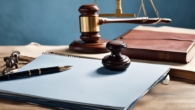
Navigating Your Rights After a Store Injury
After a store injury, it's important to know your rights and take prompt action. Customers have the right to expect a safe environment, and stores can be held liable for injuries resulting from their negligence. Documenting the incident, gathering evidence, and understanding store liability are essential steps in seeking fair compensation. Filing a claim with the store, dealing with insurance companies, and seeking medical attention are also key components of the process. By understanding the complexities of handling a store injury claim, individuals can better assert their rights and pursue the compensation they deserve, but there's more to explore in this process.
Documenting the Incident and Evidence
After a store injury, it's important to promptly document the incident and gather evidence, as this information will serve as the foundation for any potential claims or lawsuits. The sooner you start documenting, the better. Create an incident journal to record every detail about the incident, including the date, time, location, and a detailed description of what happened. Be sure to include any relevant photos or videos taken at the scene.
Witness statements are also vital in building a strong case. If there were any witnesses to the incident, try to get their contact information and a brief statement about what they saw. It's important to get their account of the incident while it's still fresh in their minds. If possible, have them write down their statement and sign it, as this can serve as valuable evidence.
Additionally, make a note of any store employees or managers you spoke with after the incident, including their names, titles, and what they said. Also, keep a record of any medical treatment you receive, including doctor's notes, test results, and medication prescriptions. By thoroughly documenting the incident and gathering evidence, you'll be well-prepared in case you need to take legal action. Remember, the more detailed and thorough your documentation, the stronger your case will be.
Understanding Store Liability and Negligence
When a store fails to maintain a safe environment, it can be held liable for injuries that occur on its premises, making it important to understand the concepts of liability and negligence. To establish liability, it must be proven that the store breached its duty of care to customers. This duty of care encompasses maintaining premises standards, implementing safety protocols, and ensuring a reasonable level of care to prevent foreseeable harm.
The foreseeability test is an essential factor in determining liability. This test assesses whether the store could have reasonably anticipated the hazardous condition that led to the injury. If the store failed to take reasonable measures to prevent the harm, it can be deemed negligent. A breach analysis is then conducted to determine if the store's actions or inactions directly caused the injury.
In evaluating negligence, the courts consider various factors, including the store's knowledge of the hazardous condition, its failure to address the issue, and the severity of the resulting injury. By understanding these concepts, individuals can better navigate their rights after a store injury and hold the store accountable for its negligence. It is important to recognize that stores have a responsibility to maintain a safe environment, and customers have the right to expect a certain level of care when patronizing their establishments.
Filing a Claim With the Store
When filing a claim with the store, it's crucial to notify the store manager promptly, providing them with a detailed account of the incident. This step helps establish a paper trail and guarantees the store takes official notice of the incident. Next, gathering incident evidence, such as witness statements, photos, and security footage, will strengthen the claim.
Notify the Store Manager
Upon sustaining an injury on store premises, the individual should promptly notify the store manager about the incident, as this notification serves as the initial step in filing a claim with the store. This notification is vital, as it sets the wheels in motion for the claims process and helps to establish a paper trail.
When notifying the store manager, it's essential to:
- Be honest and accurate when describing the incident, including the location, time, and circumstances surrounding the injury.
- Request a copy of the incident report, which should be completed by the store manager or a designated representative.
- Ask about the store's policies and procedures for handling customer injuries, including any necessary paperwork or documentation.
- Obtain the manager's contact information, including their name, title, and phone number, to facilitate future communication.
Gather Incident Evidence
After notifying the store manager, the injured individual should swiftly gather evidence related to the incident, as this documentation will be essential in building a strong claim with the store. Preserving important clues and witness statements is vital in establishing a solid foundation for the claim. The individual should take photos of the accident scene, including any hazards or obstacles that contributed to the incident. They should also document their injuries, including bruises, cuts, or any other visible signs of harm. Witness statements can provide valuable insights into the incident, so it's essential to collect contact information from anyone who witnessed the accident. Additionally, the individual should obtain a copy of the incident report filed by the store, as this document can serve as critical evidence in the claim. By gathering thorough evidence, the individual can strengthen their claim and increase their chances of receiving fair compensation for their injuries.
Dealing With Insurance Companies
Insurance companies often dispatch adjusters to investigate claims and settle cases quickly, which can put pressure on injured individuals to accept lowball offers or rushed settlements. This can be overwhelming, especially when dealing with the physical and emotional aftermath of an injury. It's essential to understand the tactics insurance companies use to minimize payouts and know how to navigate these situations.
Here are some key things to keep in mind when dealing with insurance companies:
- Be cautious of early settlement offers: Insurance companies may try to settle quickly to avoid further liability. Be wary of initial offers, as they may not fully compensate for your injuries.
- Know your policy: Understand your policy's terms and conditions to avoid falling prey to insurance tactics. Review your policy to identify any loopholes that insurance companies might exploit.
- Document everything: Keep meticulous records of your communication with insurance companies, including dates, times, and details of conversations. This can help protect you from insurance companies' attempts to deny or downplay your claim.
- Don't rush to sign: Be cautious of signing any documents or agreements without consulting a legal professional. Insurance companies may try to get you to sign away your rights or accept a low settlement.
Seeking Medical Attention and Care
When managing the intricate process of dealing with insurance companies, it's equally important to prioritize seeking medical attention and care to accurately diagnose and treat injuries sustained in a store accident. This Medical Priority cannot be overstated, as timely medical intervention can greatly impact the outcome of one's recovery. In cases where injuries are severe, an Emergency Response may be necessary, and it's essential to call 911 or seek immediate medical help.
After receiving initial treatment, it's essential to follow up with a primary care physician or specialist to guarantee proper diagnosis and ongoing care. This may involve undergoing diagnostic tests, such as X-rays or MRIs, to determine the full extent of the injuries. It's also crucial to keep a detailed record of all medical appointments, treatments, and medications, as this documentation will be essential in any potential legal proceedings.
Calculating Damages and Compensation
Their ability to accurately calculate damages and compensation hinges on documenting every aspect of their store accident experience. This involves taking into account every medical expense, lost wages, and other economic losses resulting from the incident. By doing so, individuals can build a strong case for fair compensation.
To guarantee accurate calculation, it's vital to take into account the following factors:
- Medical Expenses: Document every medical expense, including hospital bills, doctor's fees, and prescription medication costs.
- Lost Wages: Keep a record of lost wages, including the number of workdays missed and the corresponding wages lost.
- Pain Multiplier: This multiplier is used to calculate non-economic damages, such as pain and suffering, emotional distress, and loss of enjoyment of life.
- Other Economic Losses: Document any other economic losses, including property damage, transportation costs, and household expenses.
Working With a Personal Injury Lawyer
When working with a personal injury lawyer, it's essential to understand the process they'll follow to build a strong case. First, they'll evaluate the case to determine its viability and potential value. From there, they'll quickly gather evidence and explore claim filing options to secure the best possible outcome.
Case Evaluation Process
One essential step in pursuing compensation for a store injury is having a personal injury lawyer evaluate the case to determine its viability and potential value. This process is pivotal in understanding the strengths and weaknesses of the case, as well as identifying the best course of action.
During the case evaluation process, the lawyer will assess the severity of the injury, the extent of damages, and the likelihood of proving liability. Based on this evaluation, the lawyer will develop a case strategy tailored to the specific circumstances of the case.
Here are some key aspects of the case evaluation process:
- Case viability: The lawyer will assess the likelihood of winning the case and the potential value of the claim.
- Settlement options: The lawyer will explore possible settlement options and negotiate with the defendant's representatives.
- Evidence analysis: The lawyer will examine the evidence collected to determine its relevance and strength in supporting the claim.
- Legal research: The lawyer will conduct thorough legal research to identify relevant laws, regulations, and precedents that can be used to strengthen the case.
Gathering Evidence Quickly
Swiftly gathering evidence is essential in building a strong case, and a personal injury lawyer can help expedite this process by identifying and preserving key pieces of evidence. This includes witness statements, security footage, and incident reports, which can be pivotal in establishing liability.
A personal injury lawyer can employ various preservation strategies to make sure that evidence is protected and available for use in court. This may involve sending spoliation letters to the store, instructing them to preserve evidence related to the incident.
| Evidence Type | Importance | Preservation Strategy |
|---|---|---|
| Witness Statements | Establishes liability | Timely witness interviews |
| Security Footage | Visual evidence | Spoliation letters |
| Incident Reports | Official documentation | Secure storage |
| Medical Records | Proves damages | Authorization releases |
| Store Policies | Demonstrates negligence | Request for production |
Claim Filing Options
With the evidence in hand, a personal injury lawyer can guide victims through the claim filing process, helping them understand their options and make informed decisions about how to proceed. Working with a lawyer can greatly enhance the chances of a successful claim, as they are well-versed in maneuvering the complex legal system.
When it comes to filing a claim, victims have several options to ponder:
- Filing a lawsuit: Victims can file a lawsuit against the store, alleging negligence and seeking compensation for their injuries.
- Filing an insurance claim: If the store has liability insurance, victims can submit a claim with the insurer, which may provide a faster and more efficient resolution.
- Pursuing mediation or arbitration: Victims can opt for alternative dispute resolution methods, such as mediation or arbitration, to resolve the claim outside of court.
- Filing a workers' compensation claim: If the victim was an employee of the store, they may be eligible for workers' compensation benefits.
It's crucial to note that victims must be aware of the statute of limitations and filing deadlines, which vary by jurisdiction, to ensure their claim is lodged in a timely manner.
Avoiding Common Mistakes and Pitfalls
When pursuing compensation for a store injury, it's essential to recognize and sidestep common mistakes that can jeopardize a valid claim. One misstep can lead to delayed or denied compensation, leaving the injured party with financial and emotional burdens.
To avoid these pitfalls, it's crucial to understand the legal landscape and potential traps that can derail a claim.
| Legal Red Flags | Settlement Traps | Consequences |
|---|---|---|
| Delaying medical treatment | Accepting a low-ball settlement | Reduced compensation or claim denial |
| Failing to report the incident | Ignoring statute of limitations | Missed deadlines, claim expiration |
| Posting about the incident on social media | Failing to disclose pre-existing conditions | Damaged credibility, reduced compensation |
| Disregarding legal counsel | Signing a release without reading it | Waiving rights, limited recourse |
Frequently Asked Questions
Can I Still File a Claim if I'm Partially at Fault for the Accident?
Fascinatingly, many people find themselves in situations where they wonder, 'Can I still file a claim if I'm partially at fault for the accident?' Coincidentally, this is a common concern. In such cases, the concept of comparative negligence comes into play. This principle allows for apportioning liability between parties involved. Even if partially at fault, one can still file a claim, but the amount of damages awarded will be reduced accordingly, reflecting their degree of responsibility. It's essential to understand this nuance to navigate the claims process effectively.
Will My Claim Be Affected if I Didn't Seek Immediate Medical Attention?
She may wonder if delaying medical attention will hurt her claim. The truth is, delayed treatment can impact her insurance claim. Insurance companies often scrutinize claims where medical attention was delayed, arguing the injury wasn't severe enough to warrant immediate care. This can lead to reduced settlements or even claim denial. It's essential to seek medical attention promptly to establish a clear record of injury and treatment, strengthening her claim and minimizing potential insurance impact.
Can I File a Claim if the Store Is a Small, Family-Owned Business?
It's ironic that a family-owned business, built on warm relationships and trust, can quickly turn into a legal battleground when an injury occurs. But, can one file a claim against a small, family-owned store? Absolutely! Regardless of the business's family dynamics, the owners have business obligations to guarantee customer safety. If they failed to do so, one can hold them liable, seeking compensation for damages.
How Long Do I Have to File a Claim After the Incident Occurred?
She needs to be aware of the statute of limitations when filing a claim. Timeframes matter, as they vary by state and type of claim. Typically, it's between one to three years from the incident date. If she misses this window, her claim will likely be dismissed. It's important she checks her state's specific laws to make sure she files within the allotted timeframe, or she may forfeit her right to compensation.
Can I Still File a Claim if There Were No Witnesses to the Incident?
She can still file a claim even if there were no witnesses to the incident. While witnesses can provide valuable testimony, they're not the only source of evidence. Incident reconstruction experts can analyze available data, such as security footage, accident reports, and physical evidence, to piece together what happened. The importance of evidence lies in its ability to support her claim, and a skilled attorney can help her gather and present a strong case, even without witnesses.











